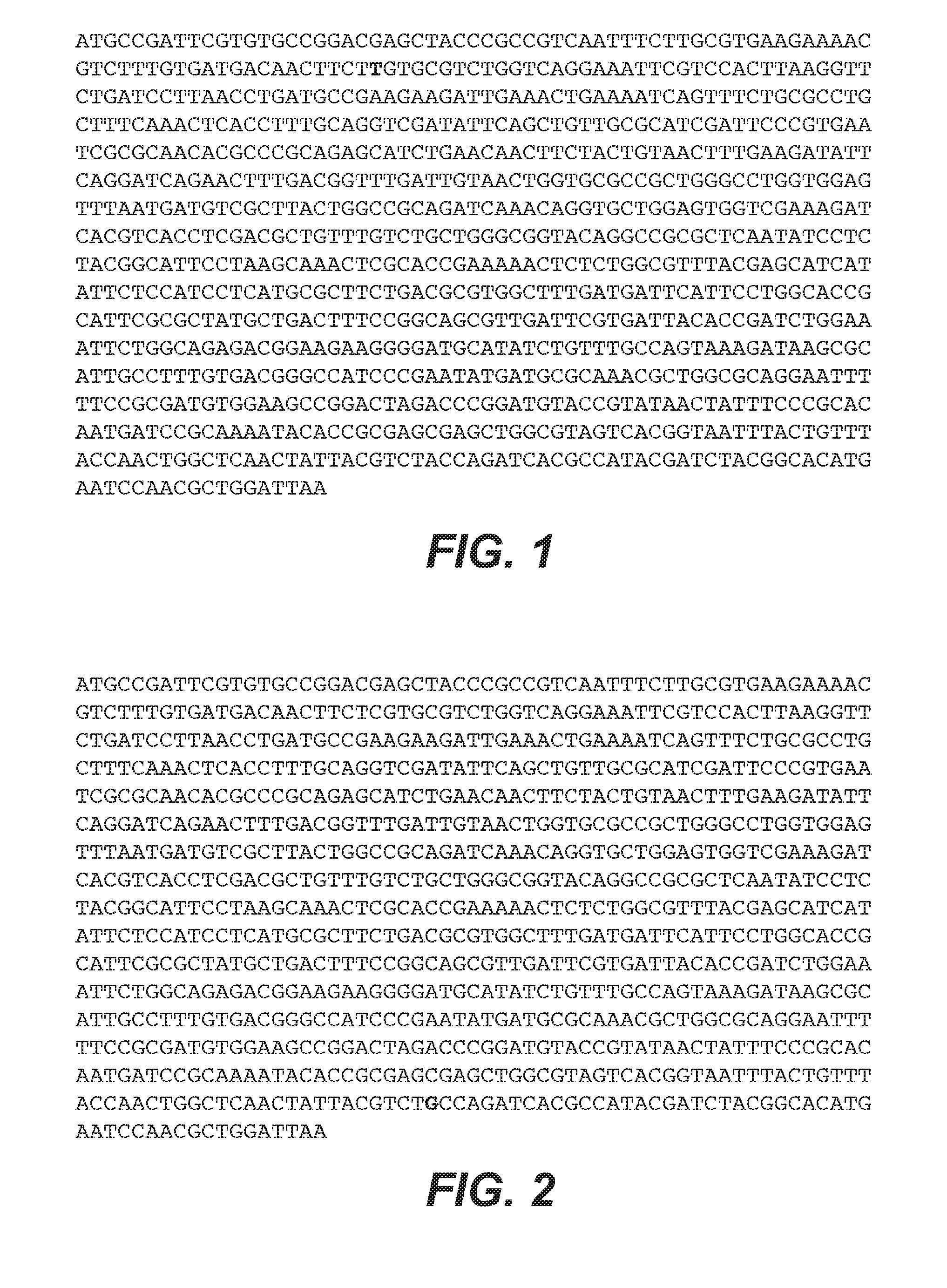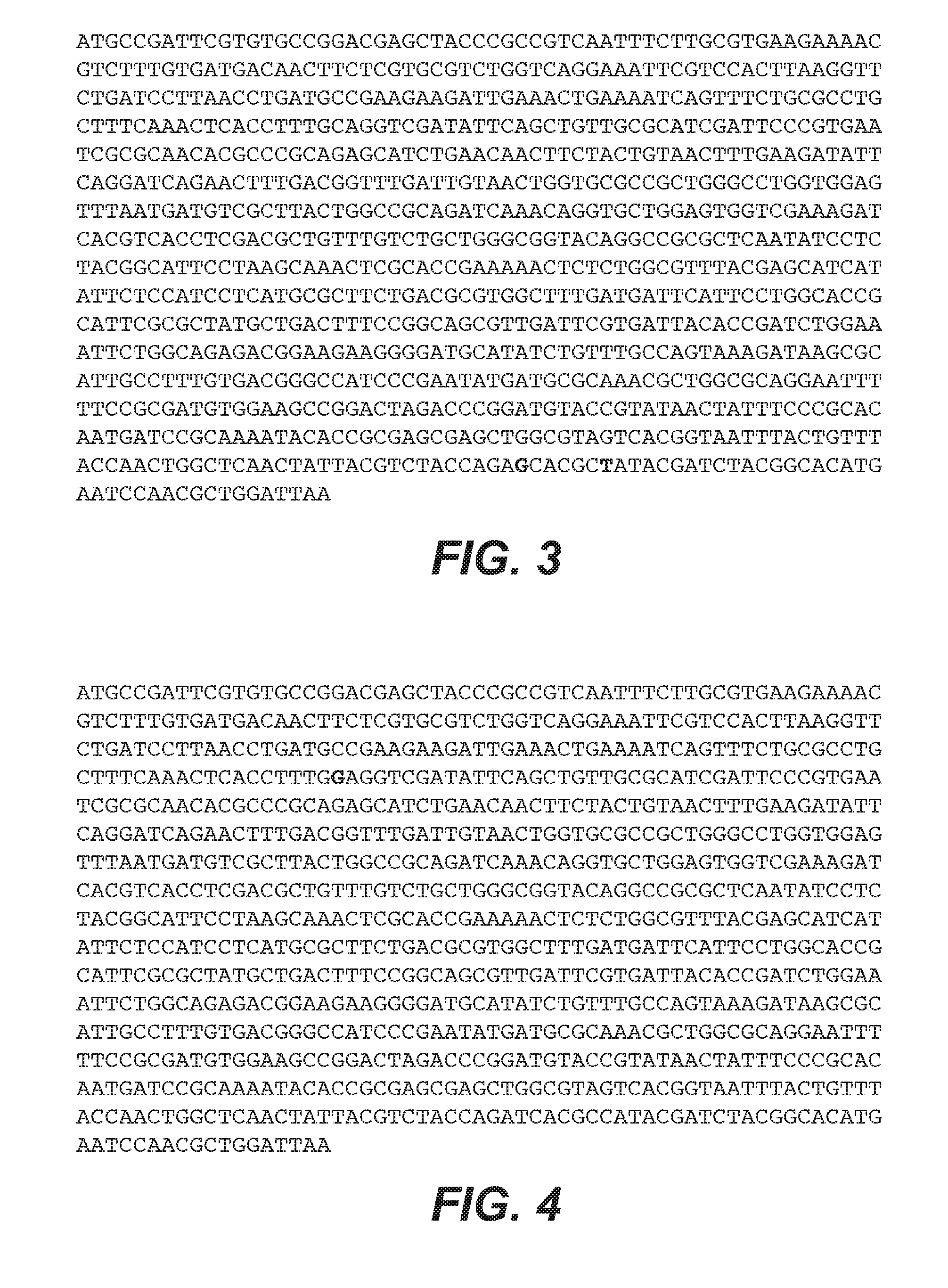Methods and compositions for preventing norleucine misincorporation into proteins
a technology of norleucine and composition, applied in the direction of immunoglobulins, peptides, transferases, etc., can solve the problems of misincorporation of norleucine in proteins, considered undesirable, misincorporation of norleucine into proteins in place of methionine,
- Summary
- Abstract
- Description
- Claims
- Application Information
AI Technical Summary
Benefits of technology
Problems solved by technology
Method used
Image
Examples
example 1
Norleucine Misincorporation During E. coli Fermentation
[0148]As described above, norleucine misincorporation often occurs during recombinant protein production in E. coli. The extent of norleucine misincorporation during recombinant protein production depends on several factors, such as, for example, the nature of the recombinant protein, the fermentation process used, and the contents of the fermentation medium. (See, e.g., Bogosian et al., (1989) Biol Chem 264:531-539.)
[0149]To examine norleucine misincorporation in a recombinant protein expression fermentation process, the following study was performed. The E. coli host strain 60E4 was transformed with a plasmid containing nucleic acid sequences encoding a light chain and a heavy chain of an Fab antibody fragment (SEQ ID NO:31 and SEQ ID NO:32, respectively) and used in the following fermentation studies using a water feed or methionine feed according to methods described above. The expressed recombinant proteins were then analyz...
example 2
Construction of Methionine Biosynthetic Pathway Mutant E. coli Host Cells
[0152]As stated above, continuous feeding of methionine during recombinant protein fermentation is often used to prevent norleucine misincorporation. As shown above in Example 1, continuous methionine feed ensured that sufficient methionine was available for the host cell, thus reducing or preventing norleucine misincorporation during recombinant protein production. To examine the effect of using an E. coli host cell containing mutant metA and / or metK alleles on norleucine misincorporation, instead of using a continuous methionine feed, the following studies were performed.
[0153]In the present studies, metA alleles containing the mutations R27C, Q64E, Y294C, I296S, and P298L, which result in feedback-resistant MetA, were introduced into 60E4 host cells using an allele exchange method (see Materials and Methods above) to obtain bacterial host cell strains 66H6 (60E4 metA(R27C)), 66H8 (60E4 metA(Y294C)), 67B8 (60...
example 3
Fermentation Results
[0156]Small-scale fermentations (10 L) without a continuous methionine feed were executed utilizing the methionine biosynthetic pathway mutant bacterial strains constructed in this study. (See Table 1.) The methionine feed was either replaced with water feed or no feed was used during the fermentation process in these experiments. Three 10 L fermentations were performed using the control host cell strain 60E4 as follows: 1) a continuous methionine feed, 2) a continuous water feed, and 3) no feed.
[0157]Fermentation trends for cell growth, as monitored by OD550, are shown in FIG. 12A. Irrespective of the nature of the feed (methionine, water, or no feed), the growth of the methionine biosynthetic pathway mutant bacteria host cells 60E4 metA(R27C), 60E4 metA(Y294C), 60E4 metA(Y294C) metK(V185E), and 60E4 metA(Y294C) metK(c1132del) was comparable to that observed in control host cells during the growth phase of the fermentation (5-28 hours). However, double mutant ho...
PUM
| Property | Measurement | Unit |
|---|---|---|
| concentrations | aaaaa | aaaaa |
| pH | aaaaa | aaaaa |
| pH | aaaaa | aaaaa |
Abstract
Description
Claims
Application Information
 Login to View More
Login to View More - R&D
- Intellectual Property
- Life Sciences
- Materials
- Tech Scout
- Unparalleled Data Quality
- Higher Quality Content
- 60% Fewer Hallucinations
Browse by: Latest US Patents, China's latest patents, Technical Efficacy Thesaurus, Application Domain, Technology Topic, Popular Technical Reports.
© 2025 PatSnap. All rights reserved.Legal|Privacy policy|Modern Slavery Act Transparency Statement|Sitemap|About US| Contact US: help@patsnap.com



